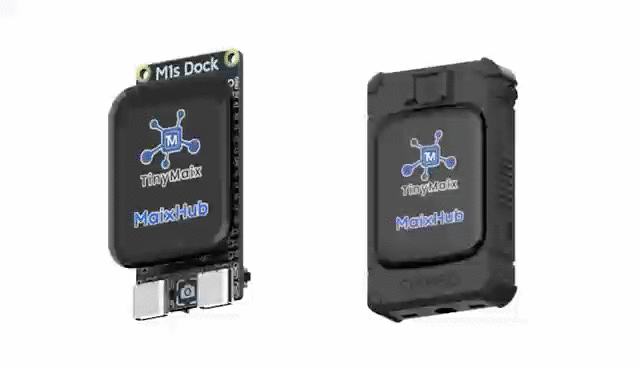This module and dev board coupling, created with the newest RISC-V components from Bouffalo Labs, aims to make tinyML and edge AI applications simpler.
The Sipeed MAIX M1s and M0sense are two new RISC-V development boards from Sipeed that are intended for tinyML and edge AI projects.
They still own the M1 (K210) from a few years ago "Sipeed reports on its most recent introduction. "Why did we create new hardware for the artificial intelligence of things? One of the earliest RV64 AI circuits, the K210 has a lot of limitations (RAM/OPS/Resolving/Peripheral). The [Espressif] ESP32-S3 is a conventional IoT chip, but it has CPU, AI, and RAM limitations. The ideal piece of AIoT hardware is [The] M1s, which is based on the most recent [Bouffalo Lab] BL808 chip while maintaining the same pricing!
The Bouffalo Lab BL808, a triple-core RISC-V system-on-chip that features a 480MHz 64-bit RISC-V core, a 320MHz 32-bit RISC-V core, and a 160Mhz 32-bit RISC-V core intended at real-time and monitoring workloads, is the foundation of the Sipeed M1s, the bigger of the company's two new modules. On the board, there are 16MB of flash memory, 64MB of pseudo-static RAM (PSRAM), and 758kB of static RAM (SRAM).
A neural processing unit (NPU) is included on the chip in addition to the main cores. Sipeed claims the NPU offers 100 giga-operations per second (GOPS) of computing performance, which is slightly less than the 230 GOPS of the Kendryte K210 used for the Sipeed M1 but handles a wider range of operations with fewer restrictions than its predecessor.
Additionally, the board supports Wi-Fi, Bluetooth Low Energy (BLE), Zigbee radios, MIPI and DVP cameras with up to 1080p resolution, SPI and RGB connectors for external displays, I2S, and analog audio compatibility, and USB 2.0 On-The-Go (OTG). Motion JPEG (MJPEG), G2D, H.264, and OSD workloads receive additional acceleration hardware, and the general-purpose input/output (GPIO) ports on the board are also used for UART, I2C, SPI, SDOI, Ethernet, analog-to-digital conversion, and digital-to-analog conversion (ADC and DAC).
The M1s Dock, an optional carrier board, has pin connectors for the GPIO interface that are breadboard-friendly, an on-board 1.69 "two-megapixel OV2685 camera module with LED flash, an analog MEMS microphone, and a 280240 capacitive touch display. Sipeed offers the MAIX M0sense for those seeking a slightly smaller device. It uses the 32-bit Bouffalo BL702 processor running at 144Mhz, has 132kB of static RAM, 512kB of flash, BLE but no Wi-Fi, an on-board microphone, an inertial measurement unit (IMU), and an optional 0.96-inch display "display.
Sipeed intends to sell the boards for $6 for the M1s and $4 for the M0sense, respectively. However, at the time of writing, the parts were only being offered in bundles through Indiegogo, with prices starting at $19 for five M0sense boards, $22 for an M1s with Dock, case, and display, or $27 for the M1s bundle plus an M0sense with LCD. Multiple bundles were also available at higher tiers.
Although Indiegogo cautions that it has just seen "a functional demo" rather than the completed devices, all hardware is anticipated to be delivered this month.





















0 Comments